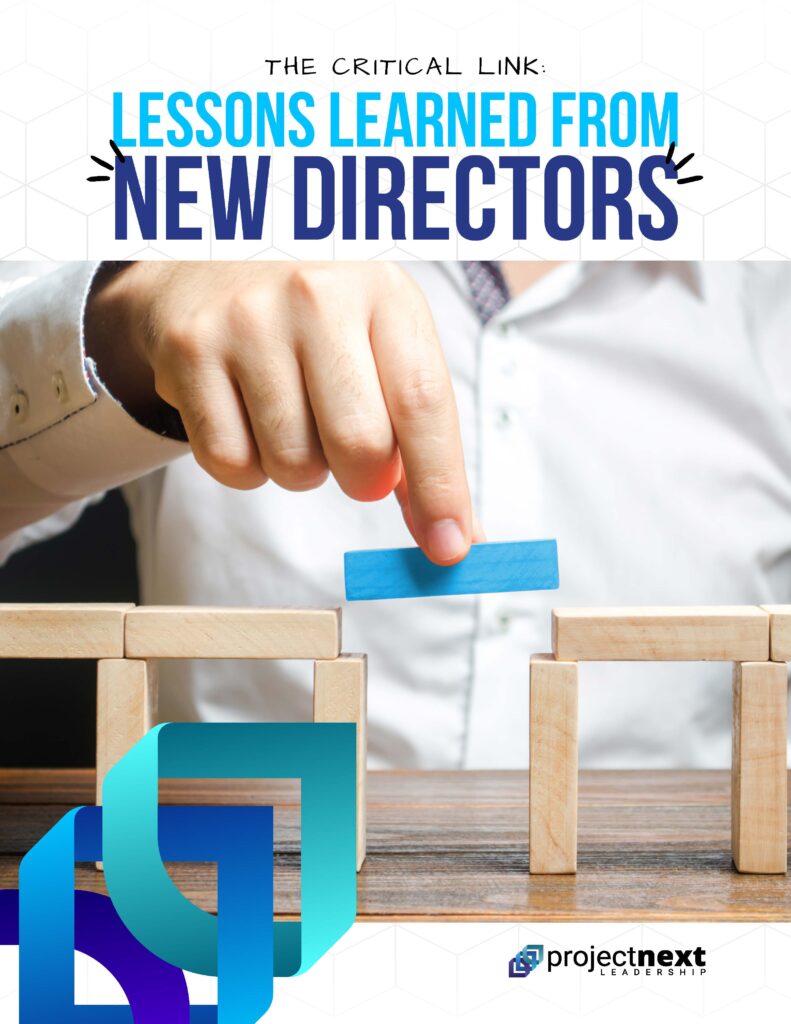As a female CEO who works in the leadership development space, I am engrossed in women’s leadership. I continually try to learn everything I can from the latest research, approach women’s leadership in creative ways, and get to the core of what makes women’s leadership so unique.
At ProjectNext, we know that leading as a woman has its differences. Women are faced with obstacles that are built into the very foundation of the workplace. Entrenched gender bias, along with the challenge of balancing it all (career, family, caregiving, our own health and wellbeing, etc.) mean that we, as women, are faced with barriers/trade offs that our male counterparts don’t often experience. And yet, despite those challenges, women often excel as leaders. Extensive research over the years has shown that women are consistently rated by their peers, bosses, and direct reports as highly effective leaders. Despite this, we know that women continue to be vastly underrepresented at critical leadership levels. IBM and Chief’s latest study, “Women in leadership: Why perception outpaces the pipeline – and what to do about it” shows that the pipeline for top leadership positions has been “hollowed out,” with just 14% and 18% female representation at the SVP and VP levels, respectively.
Just as concerning, the same study found that “fewer than half (45%) of organizations surveyed report they have made advancing more women into leadership roles a top, formal business priority,” despite ample evidence that greater gender diversity in leadership leads to better business results.
This prompted our curiosity – what makes many women such exceptional leaders? And, what are ways talent and senior leaders within the business can support building a more robust pipeline of women leaders?
Having worked closely with hundreds of women in senior leadership roles through executive coaching, client leadership development programs, and our own High Impact Leadership for Women Program, we have a rich dataset to pull from to inform our research. For this question, we chose to analyze data from 360 feedback reports from over 100 mid to senior-level women. These women serve at the Director to VP level and are considered high-performing by their organizations. Although women are underrepresented at all levels, we chose this group specifically because of the critical role we know Directors play within an organization.
Based on our analysis, we found 3 critical capabilities that we believe set women apart as leaders:
Leading Across
A critical aspect of leadership is the ability to lead without positional authority. That requires developing working relationships that cross boundaries such as departments, geographies, and backgrounds. On a scale where anything above the 60th percentile is considered very competitive, women leaders were rated, on average, 67% on engaging stakeholders and valuing the experience and contributions of people from different backgrounds. Virtually every organization is more siloed than before the pandemic, making this capability of leading across business-critical.
Building Trust
Overall, women leaders scored high on items related to building trust. We measure various aspects of trust, such as being someone you can trust to speak frankly and honestly, being trusted to do what she says she will do, and simply being trusted as a leader. Manager, direct report, and peer feedback was highly positive, with direct reports’ ratings as the highest of the rater groups. The chart below shows that women are consistently rated above the 60th percentile compared with the benchmark. Relationships and mutual trust is the mortar holding together organizations.
Executing with Excellence
The women leaders taking our 360 scored high on items related to execution, such as delivering what’s needed when it’s needed and maintaining composure in pressure situations. However, delegating was often not rated as high. We often coach women leaders who are taking it all upon themselves and are stretched too thin. Most organizations are more resource-constrained than they were a few years ago. This consistent ability to get stuff done is more important than ever.
Considering today’s extreme volatility and constantly changing landscape, these strengths of Building Trust, Leading Across, and Executing with Excellence can be game changers for any organization.
The Downside of Self-Perception
One interesting thing to note about the analysis is that in every single category, women as a group rated themselves much lower than their stakeholders did. This ranged from a 5 point to as high as a 26 point gap between self-ratings and ratings from stakeholders. This is a significant difference in perception. A low self-perception impacts self-confidence in leadership skills – it impacts the leader’s willingness to speak up and self-advocate for bigger roles. It is not just men who are preventing women from having a seat at the table, but sometimes it’s also women leaders’ self-doubt, believing that others have answers and abilities they don’t have.
So, knowing the unique strengths that they bring to the table, how can we support women leaders so that organizations can unleash their power? Here are 3 ways:
- Create flexibility AND predictability
It has been shown repeatedly that women typically face more responsibilities outside the workplace than men do. Although not always the case, women are more likely to bear the brunt of childcare and domestic responsibilities, in addition to managing their career. The pandemic deepend this divide and put many women in an almost-impossible situation. Working from home while simultaneously caring for/home-schooling children, increased household responsibilities, and caring for elder family members forced many women to put their career on the backburner or leave the workforce entirely. Although we are reaching a place of “normalcy” post pandemic, the reality is that many of our women leaders are exhausted, burnt-out, and overwhelmed.
If we are truly committed to advancing women into leadership roles and building a more gender equitable workforce, we need to create the working conditions and organizational support that reflect the realities women face. Yes, flexible and work-from-home arrangements are important. However, they aren’t enough when they are offered only to women or only in individual situations. No one wants to be the outlier, working against cultural norms.
Sally Thornton, CEO of human capital firm Forshay, recently reported on why “flex work” was almost a universal failure for decades before the pandemic. It’s because individual flexibility would violate that “ideal worker norm.” Her collaborator, Dr Leslie Perlow of Harvard Business School ran experiments for over a decade pre-pandemic, and showed that when teams experimented with time off that is predictable and used by all the team members (even though different members can have different times off), teamwork improves.
Creating predictability can mean reevaluating critical policies and benefits, such as childcare support. It can also be as simple as evolving a team’s ways of working and the team norms (e.g., decision processes, email/meeting norms, working hours, etc.). Creating clarity and expectations around these team agreements can go a long way towards creating a more predictable, and therefore more supportive, environment for women leaders to truly thrive.
- Prioritize Leadership Development Programs FOR Women
Although it is true that the capabilities women leaders need to develop are the same as those needed by all leaders in high impact roles (decision making, leading across, leading change, etc.), they also have unique needs that aren’t met by more broad-based leadership programs.
As we discuss in our blog post, Do Women (and Other Groups) Really Need Their Own Leadership Development Experiences?, the lived experiences of leaders from under-represented groups (including women) are different. And the expectations others have of them (often unconsciously) are different. Development opportunities within a cohort of leaders with similar gender or ethno-racial identities allow participants to discuss and strategize the nuanced ways in which their differences have posed challenges or roadblocks and to strategize on career advancement, getting feedback, role models, and sponsorship.
One of the most frequent comments we hear from participants at the end of our High Impact Womens Leadership Program is how empowered they feel. They are more assured that they deserve a seat at the table and feel more confident in speaking up.
To be very clear, these unique programs and experiences do not take the place of participating in more broad-based leadership programs. This isn’t “instead of,” it’s “in addition to.” However, what we have seen is that these programs and experiences can be a powerful part of the equation in creating more gender equity and a stronger network, while simultaneously building more leaders with the capabilities and strengths that most organizations so desperately need right now. Fifty-eight percent of the women leaders who have gone through our High Impact Women’s Leadership Program received a promotion within 18 months–these programs can help give women leaders the boost they need to shine.
- Rethink your succession planning
We outlined above that women leaders tend to demonstrate immense strengths in some of the most critical areas organizations need to thrive today. Based on those findings, we assume that organizations would want to capitalize on those strengths and have more women in senior leadership roles across our organizations. But many organizations just can’t crack the code. We have two words to offer: Succession Planning.
Only 14% of leaders believe their organization does succession planning well, according to a survey conducted by Deloitte. We have found that most companies approach it as an annual process that ends up being much ado about nothing. After all the time spent doing a careful talent review, identifying individuals to place on the official succession tracker, in the end, leadership simply goes with their gut.
Succession planning can be one of the most powerful tools in ensuring organizations have the right leaders, with the right strengths and capabilities, to lead the organization. And yet, it is underutilized, wielded ineffectively, and far too narrow at most companies.
Most current succession planning approaches disproportionately adversely impact women and other under-represented groups. When we wonder why we can’t seem to get more women in the C-Suite or in senior leadership positions, we need to look at the succession planning process as one of the key barriers.
To build a robust pipeline of women (and other under-represented) leaders, the succession planning process needs to be radically changed. Many organizations already incorporate a focus on diversity in their planning processes. However, having a diversity lens is not enough. To really move the needle, the underlining succession planning processes need to be designed to identify, develop, and select leaders who may have been overlooked in the past.
Research shows that women often have the key strengths of leading across, building trust and executing with excellence which are critical in today’s organizations where we are trying to break down silos and encourage enterprise collaboration. We need to look intentionally at our flex policies, development priorities and succession systems to diversify our leadership pipeline. These changes will support all leaders, from all backgrounds, to stay in the game and be able to lead in these difficult times.




